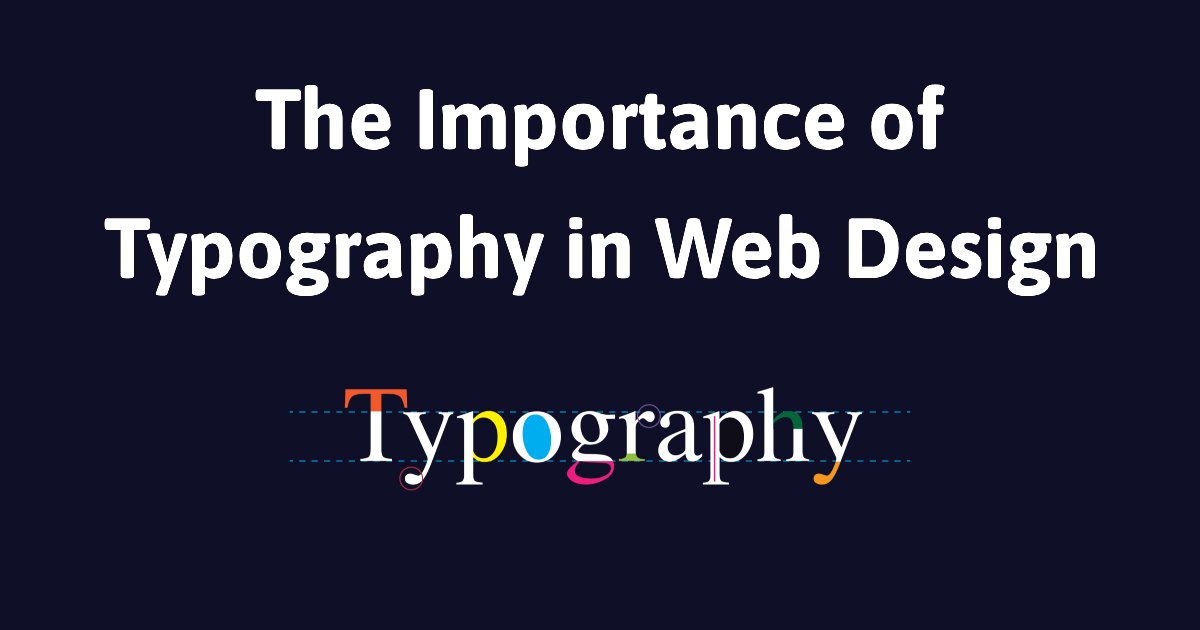Typography is more than just choosing a font for your website; it’s an essential element of web design that influences readability, user experience, and the overall aesthetic appeal of your site. The right typography can enhance the effectiveness of your content, guide user behavior, and convey your brand’s personality. In this blog post, we’ll explore the role of typography in web design and offer insights into how you can leverage it to create a visually compelling and user-friendly website.
1. Enhancing Readability
Readability is a fundamental aspect of web design, and typography plays a critical role in ensuring that your content is easy to read and understand. Choose fonts that are legible across various devices and screen sizes. Opt for a font size that provides a comfortable reading experience and maintain appropriate line spacing and letter spacing to avoid visual clutter. Serif fonts are often used for print, while sans-serif fonts are preferred for web due to their clean and modern appearance.
2. Establishing Hierarchy
Typography helps establish a clear hierarchy in your web design, guiding users through your content and making it easier for them to find important information. Use different font sizes, weights, and styles to differentiate headings, subheadings, and body text. Establishing a typographic hierarchy helps users scan and comprehend content quickly, improving the overall user experience and making your site more navigable.

3. Reflecting Brand Identity
Fonts are powerful tools for conveying your brand’s personality and values. Choose typography that aligns with your brand’s identity and tone. For instance, a formal and elegant serif font may be appropriate for a law firm, while a playful and modern sans-serif font might suit a creative agency. Consistent use of typography helps reinforce your brand’s image and creates a cohesive visual experience across your website.
4. Creating Visual Interest
Typography is a key element in adding visual interest and flair to your web design. Experiment with font pairings to create a dynamic and engaging layout. Combining different fonts for headings and body text can add contrast and emphasis, but be mindful of maintaining harmony to avoid a cluttered appearance. Creative use of typography, such as custom fonts or unique typographic treatments, can make your site stand out and capture users’ attention.
5. Improving User Experience
Good typography contributes to a positive user experience by making your content accessible and enjoyable to read. Ensure that your text is well-aligned and visually appealing to create a comfortable reading environment. Consider factors such as contrast between text and background, font size for different devices, and the use of white space to prevent visual fatigue. Typography that enhances usability helps keep users engaged and encourages them to stay longer on your site.
6. Supporting Accessibility
Accessibility is an important aspect of web design, and typography plays a role in making your site usable for individuals with visual impairments or reading difficulties. Choose fonts that are easy to read and provide sufficient contrast with the background. Implement features such as adjustable font sizes and responsive typography to accommodate different user needs. By considering accessibility in your typographic choices, you ensure that your website is inclusive and welcoming to all users.
7. SEO and Typography
While typography itself doesn’t directly impact SEO, it can influence user engagement and behavior, which are important factors for search engine rankings. Well-designed typography can improve readability, reduce bounce rates, and encourage users to spend more time on your site, all of which contribute to better SEO performance. Additionally, using proper HTML tags for headings and text structure helps search engines understand and index your content more effectively.
8. Consistency Across Devices
With the increasing variety of devices and screen sizes, ensuring typographic consistency across different platforms is crucial. Use responsive typography techniques to adapt font sizes and styles based on the device being used. Implement media queries and flexible font units such as ems or percentages to maintain readability and visual appeal across desktops, tablets, and mobile phones.
Conclusion
Typography is a vital component of web design that impacts readability, user experience, and brand identity. By selecting the right fonts, establishing a clear typographic hierarchy, and ensuring consistency across devices, you can create a visually appealing and user-friendly website that effectively communicates your brand’s message. Prioritize typography in your web design process to enhance the overall effectiveness of your site and provide a positive experience for your users.




